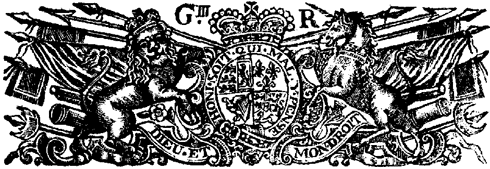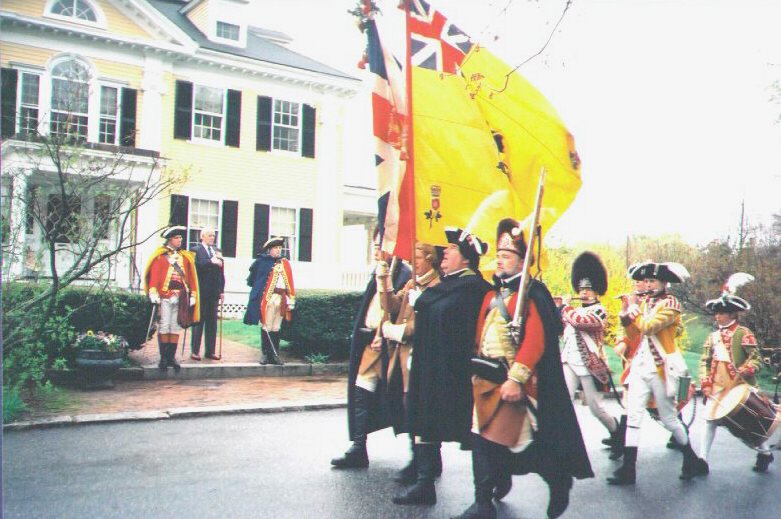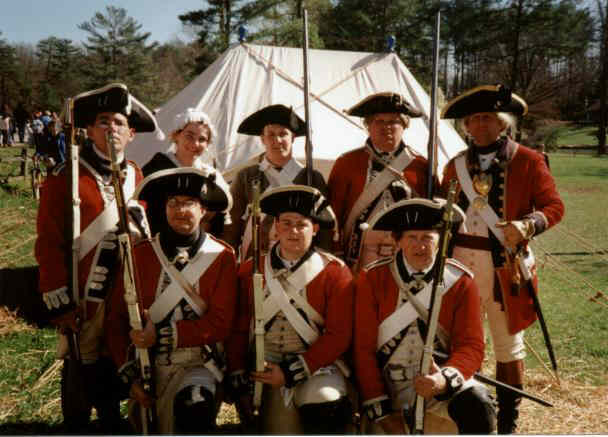

The First Foot Guards
We are a Revolutionary War
reenactment group based in Boston MA,
accurately portraying the royal household regiment that is now known as
The Grenadier Guards
The sections
of the First Foot Guards
and their uniforms.

Take a look at the differences, starting with Battalion...
Battalion companies
Pictures
Light Infantry Company
Pictures
Grenadier Company
Pictures
Regimental Officers
Click
The Musick
Click
The Chirurgeon's Staff
Click
General Staff
which are not part of a Regiment
Click
The
Mess
Click
Most of the regiments in the British Army (in 1775 numbered 1st - 70th) were "marching regiments", also known as "line regiments". There were also three Household Regiments of the king's personal bodyguards, known collectively as 'The Guards'. A detachment formed of men from the three regiments of Foot Guards was formed and sent for service in America in 1776.
Most marching regiments were clad in red wool, and were distinguished from one another by 'facings' of different colors. The facing colors could be seen on the lapels and turned up 'boot-style' cuffs. They would typically wear the number of their regiment on their buttons, on their hats, or on brass plates. Numbers might be Arabic or Roman. the facing colors would be echoed in the regimental flags or 'Colours'.
Guards regiments also wore red woolen coats, but you can distinguish these Household regiments by the facings of dark blue, with distinctive patterns of lace and arrangement of buttons.
In 1775 there were three
Foot Guards regiments:
The First Foot Guards
The Second Foot Guards*
The Third Foot Guards**
Notice that these names are not the same as the "First Regiment" which refers to the marching (or 'line') regiments.
The
First Foot Guards
This website is concerned with The First Foot Guards 1776-1783.
The First Foot Guards are more commonly known today as The Grenadier Guards,
a tile that was given to them for their valor in the Peninsular War (Napoleonic
times). That honorable name was not used at the time of the Revolutionary War.
Buttons are equally spaced and plain (they are not marked with a regimental
number). Modern Grenadier Guards carry the 'flaming bomb' badge.

Trooping the Colour
History
of the First Foot Guards
Click
More
pictures of the First Foot Guards
Click
*The Second
Foot Guards or Coldstream Guards
Buttons are arranged in pairs, and "CG" is marked on brassware.
**The Third Foot Guards or Scots Guards
Buttons are arranged in threes, and the thistle/St Andrew's cross is prominent.
Take a look at the picture and compare
it to First Foot Guards:

Later
when other Household Regiments were created, the same button progression was
followed:
The Irish Guards have buttons arranged in fours
The Welsh Guards have buttons in fives.
"The infantry, cavalry and artillery constituted the three most important branches of the army. There were in addition to these a company of military Artificers and a small but efficient Corps of engineers. The former saw no service in America, but several officers of the latter did excellent work abroad. Captain John Montresor and Lieutenant Page were present at Bunker Hill, where Page was wounded. Montresor and Lieutenants Kesterman and Fyers participated in Howe's New York campaign of 1776. Lieutenant Twiss rendered capable service under Burgoyne in 1777. It was he who pointed out the fact that Sugar Hill overlooked the American works at Ticonderoga, and urged its occupation, thus forcing the rebels to evacuate a strong position."
EE Curtis 'The British Army in the American Revolution' 1926.
Adaptations to British Army uniforms
Many believe that the British Army failed to quell the American Revolution because it did not adapt to conditions in America. According to myth, the Redcoats fought in spotless uniforms and closely-packed, linear formations. Such behavior made them easy targets for rebel militia and riflemen, who fired only from behind cover.
In reality, the British Army learned some hard lessons about campaigning in North America during the French and Indian War, 1754-1763. Many British commanders had their soldiers simplify their headgear, crop their hair, and adopt more practical uniforms. Such was the case with the First Foot Guards. Although their uniforms for service in Britain did not change, adaptations were made for American service in 1776. They also organized picked Redcoats into light infantry units to fight in open order, while the Battalion companies marched and fought in serried ranks.
Lieutenant Colonel William Howe commanded the light infantry battalion that helped capture Quebec in 1759, and he lobbied afterwards to turn his tactical arm into a permanent part of the British Army. By 1772, every British line infantry regiment had been authorized to create its own Light Infantry Company. Howe, now a major general, composed a drill system to teach these companies to function as skirmishers. During the Revolution, light companies were detached from their parent regiments and massed together in elite battalions. This was true with the composite Guards division in 1776 - combined Light Infantry and combined Grenadier sections were deployed to great effect.
As commander of the main British army in North America from 1775 to 1778, Howe relied heavily on his light infantry. In the autumn of 1777, the 2nd Battalion of Light Infantry distinguished itself in Howe's operations against the capital at Philadelphia. The battalion contained the light companies of the 37th, 40th, 43rd, 45th, 46th, 49th, 52nd, 54th, 55th, 57th, 63rd, 64th, and 71st Regiments of Foot. The battalion's personnel eschewed their regulation leather caps, ornate regimental coats, breeches, stockings, and spatterdashes to campaign in broad-brimmed hats, plain red jackets, and gaitered trousers.
On the night of 20-21 September 1777, the 2nd Light Infantry screened the advance of the 1,400 Redcoats who crept up on two brigades of Pennsylvania Continentals encamped near Paoli Tavern. When the British attacked without firing a shot, the rattled Pennsylvanians disclosed their positions by firing blindly into the darkness. Trusting to their unerring bayonets, the cheering "Light Bobs" killed or wounded up to 250 rebels and stampeded the rest, proving these British soldiers could practice stealth and surprise every bit as well as their opponents. This tactic, which was so far from the perceived idea of Redcoats marching forward in tightly-organized ranks, was dubbed by the rebels "The Paoli Massacre". They were early victims of the perception that Redcoat tactics were inflexible.
More
info: visit
http://www.revwarprogressive.org
Go to Articles:
"Facial
Hair"
"Fine wine & Cartridges"
}